The Challenger 3 Tank Must Address the Harsh Truths of War—or Else
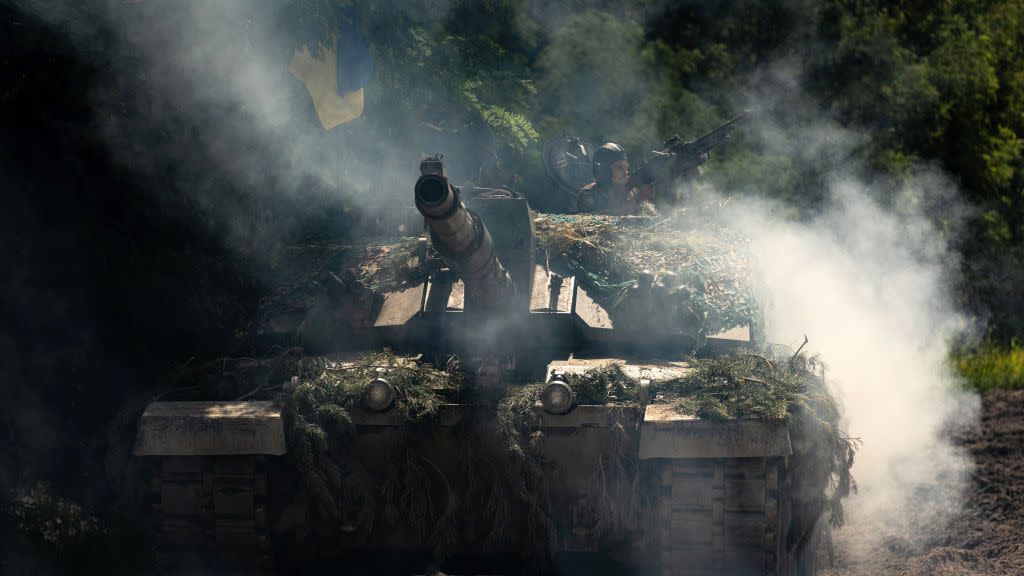
In the next three years, the United Kingdom plans to upgrade its entire fleet of Challenger 2 main battle tanks by modifying the hull and installing a new German-designed turret and gun. But mere months after finalizing the new Challenger 3 design, the 14 Challenger 2 tanks the UK donated to Ukraine began seeing combat against Russian invaders. Ukrainian crews soon had plenty to praise and criticize to the press about the British behemoth’s battlefield performance.
As that feedback arrived too late to affect Challenger 3’s design, Popular Mechanics looks at whether the new tank’s designers correctly anticipated what needed improvement.
How does Challenger 3 improve on Challenger 2?
The UK has played a major role in the history of armored warfare—pioneering the tank in World War I, fielding thousands of tanks in World War II and the Cold War, and managing to deploy heavy armored brigades to wars in Iraq in 1991 and 2003 without losing a single Challenger 1 or Challenger 2 main battle tank to enemy fire.
But by the 2020s, the British Challenger 2 fleet had shrunk in size and languished without modernization due to austerity measures and growing sentiment that the island nation should focus on air and sea power. A chorus of skeptics argued that heavy, hard-to-deploy main battle tanks were less important on modern battlefields saturated with guided weapons and drones.
But the UK’s NATO allies wanted them to continue contributing their fair share of heavy armored forces to defend Eastern Europe against potential Russian attacks. Ultimately, the British government elected to downsize from 227 to just 148 Challenger tanks in 2021, which have been organized into two (battalion-sized) regiments plus a training unit. The remaining tank would be upgraded to the nearly 74-ton Challenger 3 model at a cost of roughly £800 million (equivalent to roughly $1 billion USD, or $6.7 million per refurbished tank.)
Promisingly, Challenger 3 completed its critical design review ahead of schedule in February of 2023. The design is now more or less fixed, and has seemingly avoided problems that notoriously bedeviled the UK’s Ajax APCs.
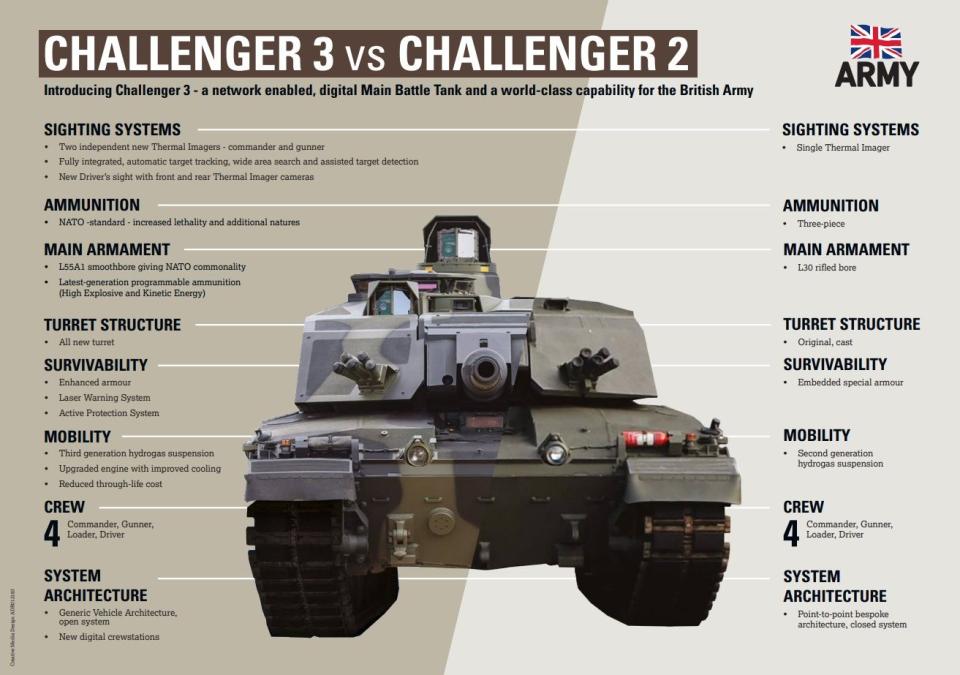
The Challenger 3’s new German turret features a new Rheinmetall L55A1 smoothbore 120-millimeter gun with ammunition interchangeable with that of NATO allies, unlike the Challenger 2’s unique rifled gun of the same length and caliber.
The turret also incorporates a half-ton Trophy-MV Active Protection system (formerly Trophy Light), which uses radar to detect incoming anti-tank missiles, rockets, and kamikaze drones, and then swats them down using counter-munitions that generate shotgun-like blasts. Trophy also pinpoints the origin point of enemy fire to allow for rapid retaliatory attacks. This ‘Medium Variant’ model is smaller and weighs 40% less than the standard ‘Heavy Trophy,’ differing primarily in the number of counter-shots it has (6 instead of 10).
The battle-proven Trophy (by Israeli company Rafael) was successfully tested on Challenger 3 in the fall of 2023,and achieved a 90% intercept rate in over two-dozen test. But so far, only 60 Trophy-MVs have been ordered for the planned 148 Challenger 3s, to be built by the EuroTrophy joint venture in Germany.
Trophy is supplemented by an Israeli Elbit Laser Warning System (ELAWS) that alerts the crew if their tank is targeted by laser targeting systems common to Russian anti-tank missiles, giving the crew an additional warning vector and precious extra seconds to pop smoke and maneuver evasively.
The Challenger 3’s turret also features new sights—including an additional independent thermal viewer for the tank commander to supplement the gunner’s sight— helping reinforce the long-distance spotting advantage of modern Western tanks. The infrared imaging sensors will be third-generation types capable of greater resolution and range.
The Challenger 3’s new fire control system also introduces capability to automatically search for hostile targets, classify them by type, and track them with the gun. More broadly, digitization of onboard systems should facilitate networking with friendly forces, the installation of future upgrades thanks to open-architecture standards, and the sharing of information between crew members.
Though Challenger 2’s hull is retained, its insides will change too, including new-generation Horstman hydrogas suspension that should improve stability (and therefore accuracy) when the tank is firing on the move. There’s also a new engine cooling unit to prevent overheating.
Challenger 2 in particular has suffered mobility issues due to having a less powerful motor than the comparable Abrams and Leopard tanks, despite weighing more. It’s unclear whether the 3’s new TN54E epicycle transmission and Perkins CV12-8A or -9A V12 diesel engine will boast a higher output (some claim 1,350, 1,400 or 1,500 horsepower) or end up having the same 1,200-horsepower output as the Challenger’s current CV-12-6A diesel. Regardless, the engine (and the tank’s electrical architecture) will support increased electrical generation.
Both turret and hull will also feature “enhanced protection” gained by swapping out the existing combination of internal Chobham and external Dorchester armor plates for new armor packages called Farnham and EPSOM, respectively—the latter of which is an optional, bolt-on modular armor system.
The upgraded Challenger 3s are expected to enter service between 2027-2030, and serve through at least 2040.
The Challenger 2 in Ukraine
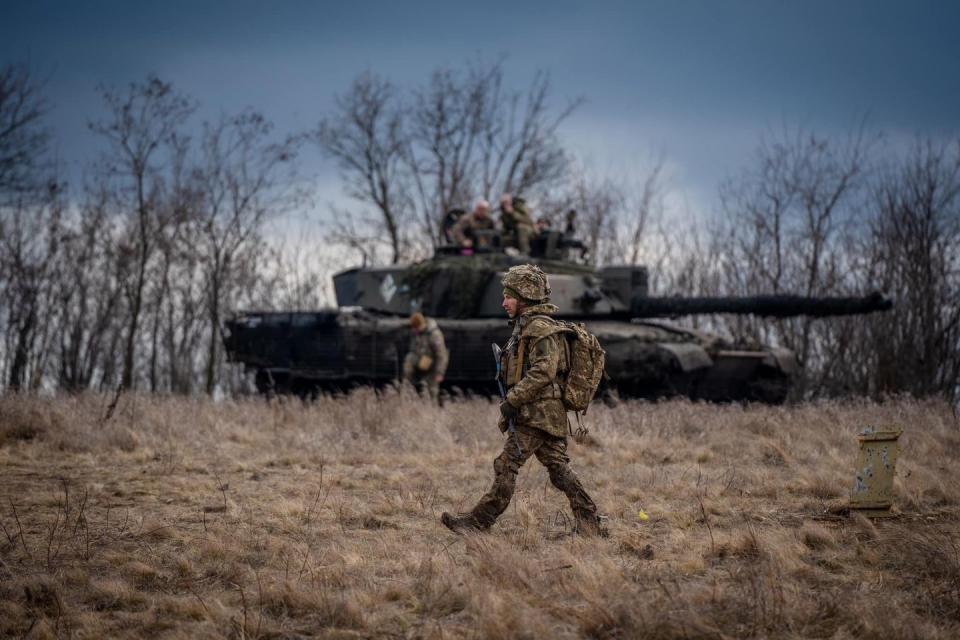
Shortly before Challenger 3’s design was finalized, in December of 2022, the UK announced it would transfer 14 Challenger 2s to Ukraine—a token quantity that succeeded in breaking a political logjam and lead to the donation of over 250 additional Western-designed tanks. Ukrainian crews flew to the UK and trained to operate the tanks over 3 months.
The first Challenger 2s arrived in Ukraine in March, supplied with white phosphorus smoke grenades and both HESH and depleted-uranium kinetic shells for the L30 gun. They were grouped into a tank company of Ukraine’s newly-raised 82nd Air Assault Brigade, which also operates American-supplied Stryker 8-wheeled armored personnel carriers and German Marder infantry fighting vehicles.
#Ukraine: Oleksii Reznikov, the Ukrainian Minister of Defence, confirms the arrival of the first three Challenger 2 tanks from the UK.pic.twitter.com/QJaOxdSNzn https://t.co/5ayHyfKwoo
— 🇺🇦 Ukraine Weapons Tracker (@UAWeapons) March 28, 2023
The UK also supplied two tracked 67.5-ton Challenger Armored Recovery and Repair Vehicles (CRARRVs) to help tow immobilized Challenger 2s—a service that would soon prove essential. These use the hull of a retired Challenger 1 tank (with an added winch capable of pulling up to 108 tons), a 7-ton-class crane for extracting the tank’s powerpack, a dozer blade, and specialized welders and cutting tools.
🇬🇧🇺🇦 | British-supplied Challenger Armoured Repair and Recovery Vehicle (CRARRV) in service of the Armed Forces of Ukraine.
These vehicles are capable of repairing and recovering Challenger 2 tanks in the field, and were delivered by London to Kyiv in conjunction with the… pic.twitter.com/iFWebxNWf6— Status-6 (Military & Conflict News) (@Archer83Able) January 5, 2024
In September of 2023, one of the Challengers 2s was immobilized by Russian artillery in the Battle of Robotyne and subsequently destroyed by a Lancet kamikaze drone after being abandoned by its crew (who all survived). So far, this remains the only Challenger 2 confirmedly destroyed by enemy fire. At least two other Ukrainian Challenger 2s were damaged in battle but repaired, with one requiring a gun barrel replacement.
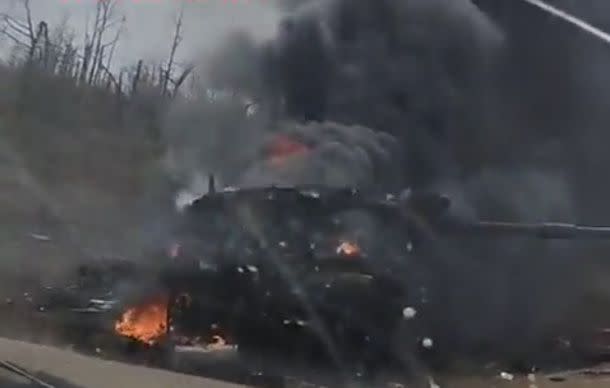
More troublingly, however, five remain out of action due to breakdowns and lengthy delays acquiring replacement parts. Both the Challenger 2’s wheels and rubber track pads were prone to wearing down, and targeting systems in the turret also reportedly proved quick to fail. Thus, after a year of operational service, only half of the original 14 were operationally available in March of 2024.
The rifled L30’s short barrel life (just 500 shots, rather than 1,500 to 3,000 shots expected of Rheinmetall’s smoothbore gun) also rapidly proved to be a hindrance.
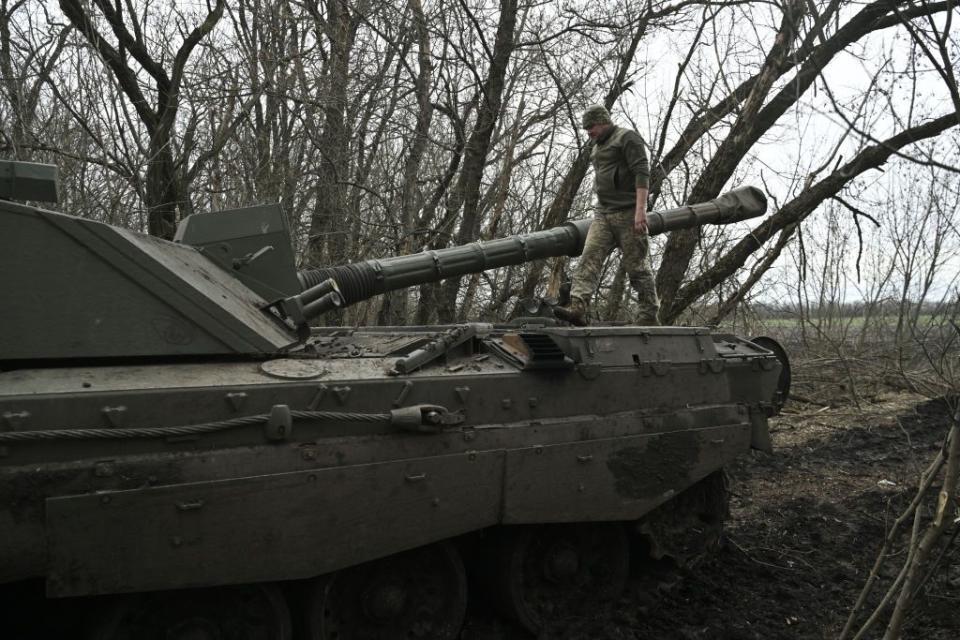
Ukrainian crews also reported the lack of effective anti-personnel shells for the L30, perhaps reflecting either a shortage of HESH rounds or dissatisfaction with HESH as compared to traditional High Explosive Fragmentation (HE-FRAG) rounds. This problem would likely be less acute using a gun compatible with the NATO-standard ammunition used by Ukraine’s Leopard 2s and Abrams tanks.
Nonetheless, the Challenger 2’s tough armor and the accuracy of its L30 gun received positive reviews from Ukrainian tankers. One crew reported that it regularly engaged (and hit) adversaries from over 2.8 miles away, comparing it favorably to the ubiquitous (and less accurate) Soviet/Russian 2A46 125-millimeter gun. The L30 gun’s stabilization also received praise for allowing accurate shots on the move. Challenger 2 crews were also reportedly aided by drones to help adjust fires at long range.
A short report on the combat use of the British-supplied Challenger 2 tank, which belongs to the Ukrainian 82nd Air Assault Brigade. For secrecy purposes, some details are omitted from the report. pic.twitter.com/WqkqkAT7nJ
— Challenger Tank In Ukraine🇬🇧🇺🇦 (@ChallengerInUA) January 31, 2024
Though Ukraine considered Challenger 2 to primarily be a ‘sniper’ tank, knocking out armored vehicles and concrete bunkers from far away (and preferably at night, in order to leverage superior thermal optics), they also said that the 2s were used on occasion to charge Russian trenches in the hopes of terrifying infantry into withdrawing.
Ukrainian crews also noted that Challenger 2’s heavy weight, compounded by inadequate engine power, caused frequent bog-downs in muddy Ukrainian soil that required recovery-by-towing—a problem witnessed by a visiting reporter from The Sun.
Challenger 2 got stuck in the black Ukrainian mud right on the test site when journalists from the British 🇬🇧 Sun newspaper were shooting a story about it‼️
Challenger 2 weighs approximately 64 tons. It is 20 tons heavier than the T-72. pic.twitter.com/K1obeF6Y54— Sharky 🇬🇧 🤝 🇺🇦 (@Jamie04381095) March 13, 2024
It’s worth noting that Ukrainian Challenger 2s weren’t delivered with the add-on armor fitted to British tanks in Iraq, which was meant to proof against rocket-propelled grenades at the cost of increasing weight to a staggering 81 tons. Several instead mount Ukrainian-designed slat armor, including (in some cases) anti-drone cages.
#Ukraine/#Russia 🇺🇦🇷🇺:
🇬🇧#British-supplied Challenger 2 MBT, with slat armor on the sides of the hull, in use by the 🇺🇦#Ukrainian Armed Forces.
The UK has handed over a total of 14 of these famous tanks to Ukraine.
Source: TikTok user: ‘user7686282195184’ pic.twitter.com/HZTctcPb1r— 𝕻𝖗𝖆𝖎𝖘𝖊 𝕿𝖍𝖊 𝕾𝖙𝖊𝖕𝖍 (@praisethesteph) August 16, 2023
Challenger 2 MBT in service with Ukrainian Air Assault Forces, March 2024. Interesting lack of additional slat armor. pic.twitter.com/n0ZRhJOL6D
— B-AREV (@trip_to_valkiri) March 6, 2024
However, more recently, some Ukrainian Challenger 2s were sighted without the mods, hinting that they weren’t implemented fleet-wide—or perhaps had been removed for being too cumbersome.
Challenger 2 MBT in service with Ukrainian Air Assault Forces, March 2024. Interesting lack of additional slat armor. pic.twitter.com/n0ZRhJOL6D
— B-AREV (@trip_to_valkiri) March 6, 2024
Does Challenger 3 redress Challenger 2’s shortcomings?
Overall, Ukraine’s experience with Challenger 2 affirms the conventional wisdom regarding the tank’s strengths and weaknesses. The 2’s rifled L30 gun is particularly effective at long range shots, and its armor is formidable. Yet, excessive weight and inadequate engine power have proven a liability when navigating Ukraine’s often muddy terrain, and the uniqueness of its ammunition and lack of spare parts appear to have hampered its availability for combat operations.
The Challenger 3’s new German Rh-120 L55A1 gun will likely ease logistical concerns related to ammunition. Compared to the rifle L30, the L55A1 likely offers better anti-tank performance out to medium range if furnished with modern APFSDS kinetic energy rounds, though this will fall off in accuracy for very long range shots (2 miles+) against both armor and personnel targets.
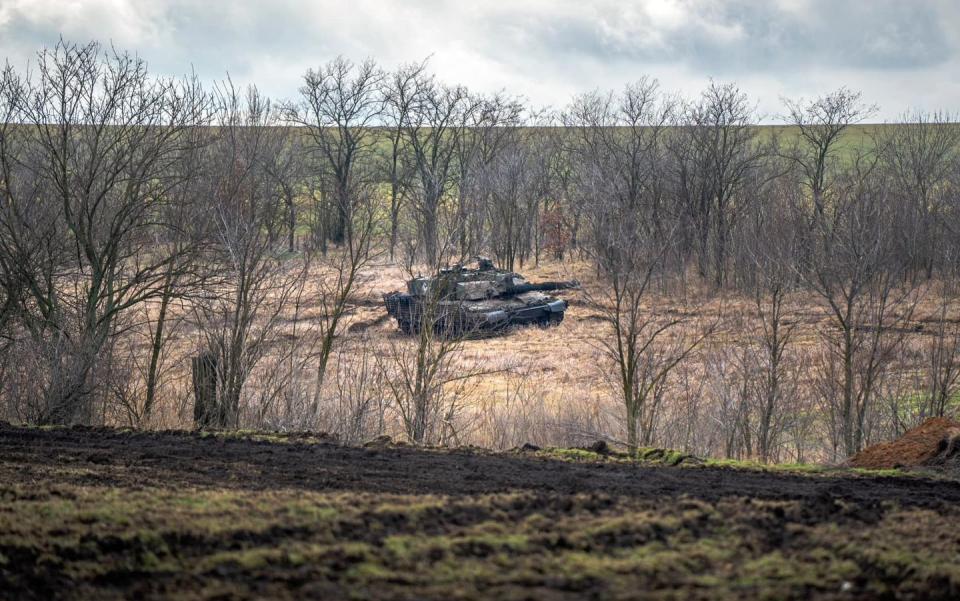
Small drones have also emerged as highly effective anti-tank weapons in Ukraine. Challenger 3’s Trophy-MV may be adaptable for defeating kamikaze-type drones (the rival Iron Fist APS system can), but it lacks the elevation to engage those dropping grenades from directly above. Of course, Trophy’s protection against anti-tank missiles and rockets alone is valuable, but shoring up drone protection is critical.
Perhaps most troubling with Challenger 2 is the issue of mobility—the base weight of Challenger 3 (before factoring add-on armor) exceeds that of Challenger 2 by a few tons, and it's unclear whether Challenger 3’s new engine is actually uprated. If not, the mobility and bog-down problems experienced in Ukraine seem likely to persist. That said, Challenger 3’s new transmission, suspension, and engine cooling might help with mobility and reliability.
Lastly, analysts have warned that the UK’s downsized armor force lacks the ‘spares’ to replace vehicles lost in combat, and is highly dependent on allies to fill-out the mass lacking in its supporting force structure. Contrary to the experience of Western armor battling Iraq’s conventional forces, fighting in Ukraine has shown that even heavily protected Western tanks can suffer substantial attrition in a high-intensity combat—particularly from drones, mines, artillery, and missiles that bypass formidable frontal armor to hit the top, belly, rear, or tracks.
You Might Also Like


